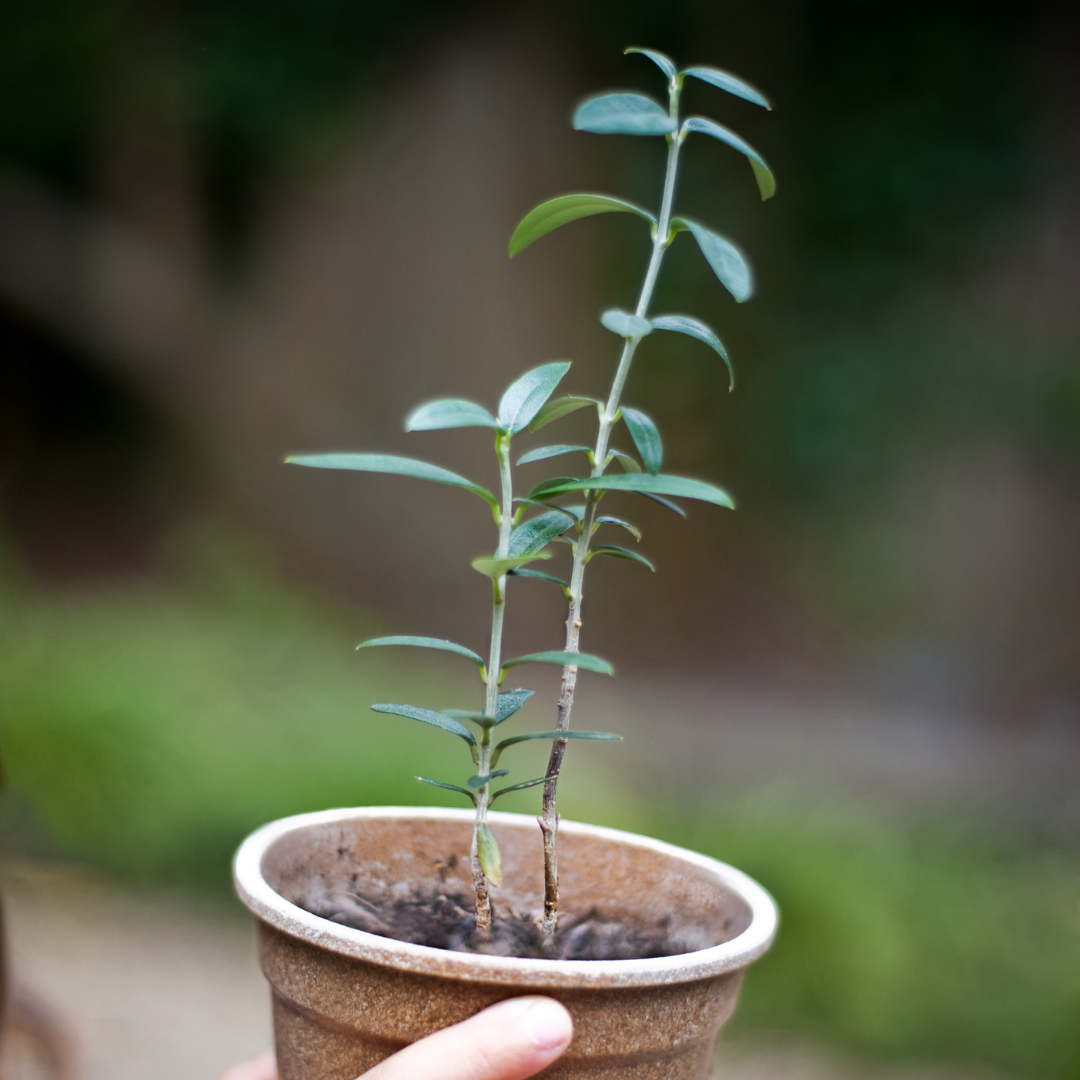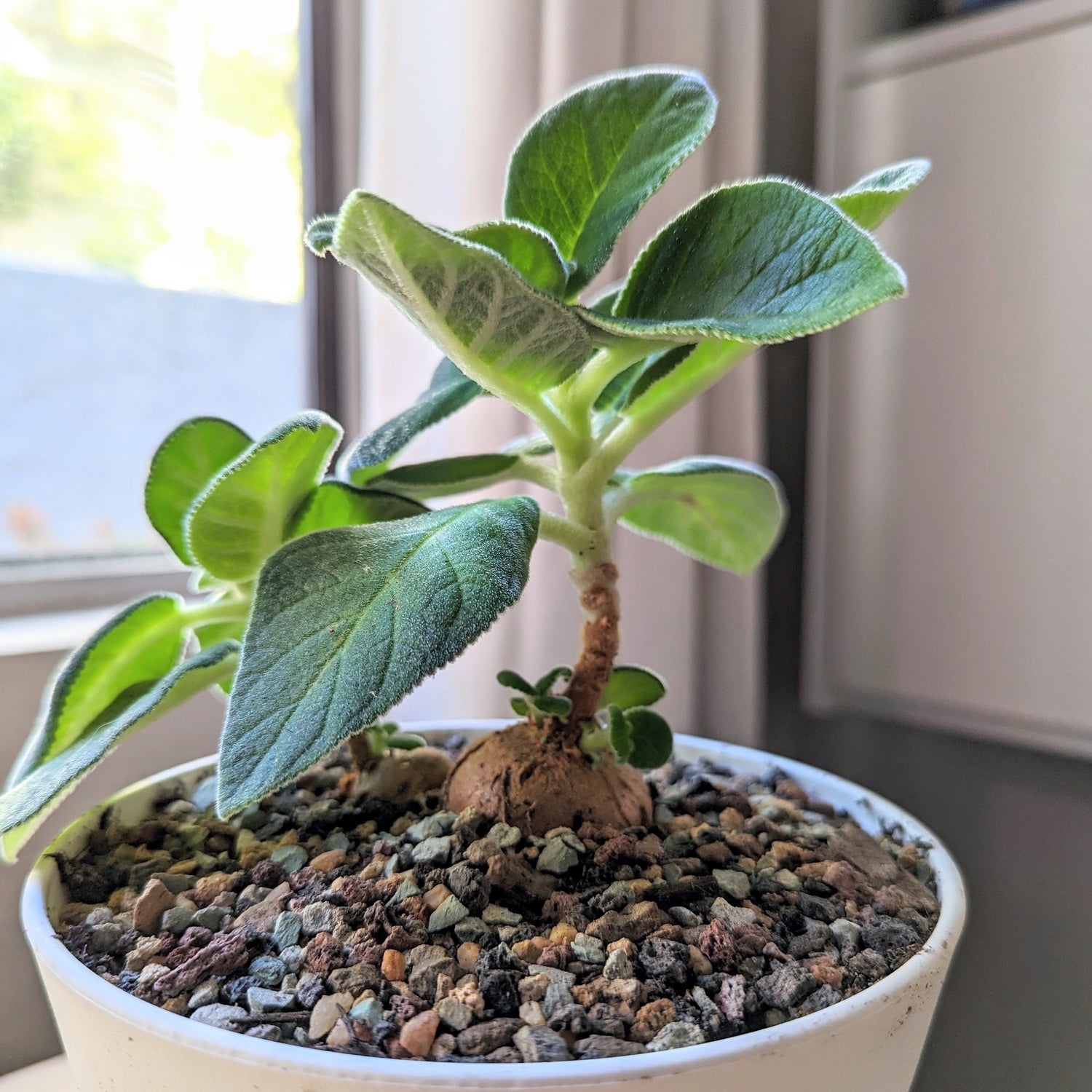So you just got some new houseplant seeds and you're so excited to get started growing that indoor jungle! Before jumping in, however, there are some things you should do beforehand to make sure your seeds are set up for success so that as many of them can germinate as possible. We discuss a lot at Plantflix that houseplant seeds are much trickier to grow compared with your typical garden seeds varieties like tomatoes or chamomile, and they need a little more care to make sure they sprout successfully:
1) Don't plant all your seeds at once! (Unless they're a perishable seed)
 If you got houseplant seeds from us, you'll have anywhere from 10-20 seeds of a particular variety(the quantity is specified on the product page). As tempting as it can be to sow them all at once, you might want to start out by planting just a few. Seed setups can take some adjusting, so this way if something goes wrong in your first setup, you can try again with the leftover seeds!
If you got houseplant seeds from us, you'll have anywhere from 10-20 seeds of a particular variety(the quantity is specified on the product page). As tempting as it can be to sow them all at once, you might want to start out by planting just a few. Seed setups can take some adjusting, so this way if something goes wrong in your first setup, you can try again with the leftover seeds!
This is particularly true of the intermediate-advanced level seeds. As an example, it took me 3 tries to get coffee plant seeds to sprout when I was just starting out in the hobby, and this is as someone who had extensive experience in gardening, maintaining houseplants, and even growing trickier houseplant seeds! (The first time I didn't even use a humidity dome or heat mat, the second time, I used a humidity dome but no heat mat and this was in the middle of winter, and finally I was able to get the setup down the third time around. I was so excited to finally see coffee sprouts!!)
However, if you have seeds that are perishable(we only sell Monstera Deliciosa, but there are other seeds out there like Anthurium that don't store well), then I recommend planting those as soon as possible or the seeds will go bad.
2) Do your seeds need any seed prep?
 Seed preparation namely entails pre-soaking, stratification and scarification. These are steps meant to either help break down the tough outer coating of the seed, or to send signals to the seed that the environmental conditions are good for germination. In cases of seeds like Ginkgo or Olive tree seeds, they won't sprout at all without stratification, which mimics a winter period by keeping the seeds in the fridge for a certain amount of time before bringing them out into a warm setup to imitate spring-like conditions to encourage the seeds to sprout.
Seed preparation namely entails pre-soaking, stratification and scarification. These are steps meant to either help break down the tough outer coating of the seed, or to send signals to the seed that the environmental conditions are good for germination. In cases of seeds like Ginkgo or Olive tree seeds, they won't sprout at all without stratification, which mimics a winter period by keeping the seeds in the fridge for a certain amount of time before bringing them out into a warm setup to imitate spring-like conditions to encourage the seeds to sprout.
If you bought seeds from us, we specify what seed prep steps are recommended for each seed on both the product page of the seed variety and also the mini care slip that comes with the seeds themselves. Definitely pay attention to those! If you need extra clarification on how long to stratify your seeds, that information can also be found on the product page under the "instructions" tab.
Furthermore, here's a post we wrote about different scarification methods, which also includes pre-soaking the seeds.
3) Plan your setup
This may seem straightforward, but having the right materials for planting houseplant seeds is essential. Some things to consider at a heat mat, a mini greenhouse, grow lights, and soil for seed starting.
 Most houseplant seeds need temperatures to stay consistently >70F to germinate. To make this clear, this doesn't mean an average of 70F, but rather the temperature of the setup shouldn't fall below 70F at all or that may mean your seeds don't germinate. If you're growing seeds in the winter, then a heat mat may be a necessary addition to your setup(they're anywhere from $10-20 on amazon, and definitely worth it!)
Most houseplant seeds need temperatures to stay consistently >70F to germinate. To make this clear, this doesn't mean an average of 70F, but rather the temperature of the setup shouldn't fall below 70F at all or that may mean your seeds don't germinate. If you're growing seeds in the winter, then a heat mat may be a necessary addition to your setup(they're anywhere from $10-20 on amazon, and definitely worth it!)
Houseplant seeds also need high humidity levels to germinate, and that's where the mini greenhouse comes in. They're generally pretty affordable as well, however, you can make your own by putting a ziploc baggie or plastic wrap over your planter to keep the moisture in.
Do you have a spot in your home with bright, indirect light? Houseplant seeds don't do well in direct sun, and a common mistake we see new hobbyists make is put the houseplant seeds out on a sunny windowsill because that's common practice for growing herb and vegetable seeds. If you don't feel you have the best spot in your home for your houseplant seeds, a grow light can help!
Finally, picking the right soil is essential. Planting houseplant seeds in contaminated soil can mean your seeds will mold over or will get infested with bugs. You'll need either a fresh potting mix, or, my personal favorite, a coconut fiber soil pod which are fantastic for starting seeds.
Now that you hopefully have all 3 steps covered, you're ready to plant the seeds! We have a post here that goes into detail about how to grow houseplants from seed that I definitely recommend checking out. As always, if you have any questions, don't hesitate to reach out at hello@plantflix.com. Good luck and happy planting!





